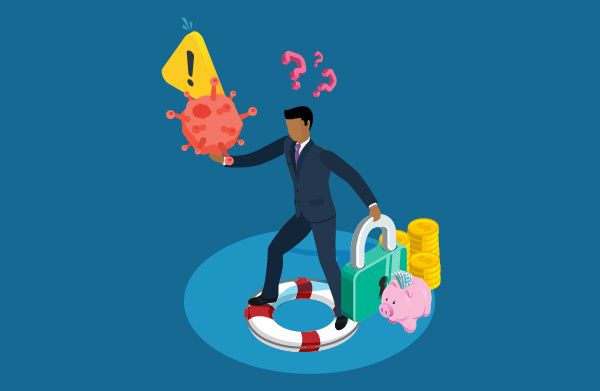By now, chances are most organizations have reached out to critical third-party service providers to gather up all the information they (the vendors) have on file about their pandemic planning. You may have already noticed that some of these vendors are already showing signs of stress. With limited capacity, inadequate pandemic planning, weak execution, under-capitalization and a lack of staff, it’d be an understatement to say that tensions are running high.
“Bumpy” was to be expected — let’s be honest, most of us experienced our own version of bumpy once we started executing a new work from home policy and began the process of serving our clients remotely. However, there’s a big difference between rocky and wholly inadequate pandemic preparedness... and unfortunately, now is the time to determine if our vendors will make it to the other side of this.
So, what can you do to forecast which vendors will make it for the long-haul and which may become a risk to your organization? Let’s look at two strategies.
Short-Term Forecast Strategy for Monitoring Vendor Risk
There are really four serious warning signs in the short-term that can signal your vendor may not make it past the initial shockwave of the pandemic.
These warning signs include:
- High vendor unemployment rate. Has your vendor furloughed any employees? If yes, what percentage of their work force was furloughed? Big reduction in forces will have significant impacts in both the short- and long-term.
- Low sales. What do their sales numbers look like? The focus here should be around new sales – not general revenue. Are they part of the lucky minority that is providing an essential service during the pandemic? If so, their sales numbers should reflect that. But, if that’s not the case, sales are likely way down. In general, unless these vendors have significant cash on hand to weather the storm, you’re likely looking at a vendor that won’t survive.
- Abandoning a product line abruptly. If you’ve noticed a vendor has recently dropped a product line, this could signal that a vendor is unable to cover all its costs, and unfortunately, this may be a part of a larger financial problem.
- Changes in management. Have you noticed a high turnover rate, or brand-new faces among the management team? If so, this can sometimes spell danger when it comes to vendor longevity.
Once you have this information, look at your critical vendor list and ask yourself, “is this a vendor I truly need to stay in business?” If the answer is yes, then get to work gathering additional data. You could try sending them a quick questionnaire, but the truth is, you likely won’t get accurate information. Your best bet in a pandemic environment is to pick up the phone and have a conversation.
Long-term Forecast Strategy for Monitoring Vendor Risk
So, what about down the line? We’d like to say that in a couple months’ time it’d be okay to drop your guard a bit. But, truthfully, there’s going to be aftershocks, and we all are going to have to buckle up for the foreseeable future for the following reasons:
- More vendors will require your attention. You’re not out of the weeds yet. You will still need to monitor your vendors, so make sure you keep tabs on your critical and high-risk vendors so you can stay ahead of any potential issues.
- Regulatory risk will increase. Pandemic related guidance is already being published by all of the major regulators, such as the FFIEC’s Interagency Statement on Pandemic Planning. Increased guidance means regulators are watching and there’s more regulatory risk as a result.
- Pandemic effects will continue for at least 6-18 months. The effects of the pandemic are going to be here for a while. You’ll see vendors continue to face challenges that you’ll want to be fully aware of.
- Your reputation may be compromised. As your vendors, especially customer facing vendors, scramble to make ends meet, services can suffer which in turn can damage your reputation if you’re not informed and prepared to address the issues.
- The financial domino effect will continue to be seen. It begins with staff cuts and continues to product and service issues, patch delays causing information security issues, product testing diminished and so on.
At a risk of sounding painfully rote — the effects of the pandemic aren’t going anywhere, anytime soon. But the good news is, there are things we can do to help move forward and protect our organizations in the process. Pandemic or not, vendor due diligence is an “all-the-time" kind of thing, so make sure to maintain those habits. Remember, knowledge is power — the more information you have, the better positioned you are to make the best decisions possible surrounding your vendor list.
Do you know how to review your vendor's pandemic plan? Download the infographic to help.













